The term "stock market" feels like a gigantic, flimsy force that is difficult to understand. Nevertheless, these markets are one of the most important parts of the global economy today. Countries around the world depend on stock markets for their economic development.
Nevertheless, stock markets are a relatively new phenomenon. They have not always played a significant role in the global economy. Nevertheless, they had a humble beginnings in Western Europe in the 17th century. From then until now, here's everything you need to know about stock market history.
-
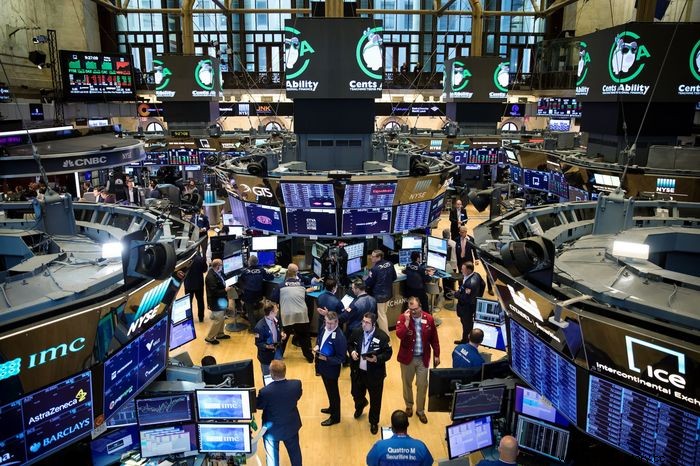
- Credit:Nat Geo
The idea of a stock market
The concept of a 'stock market' or 'stock exchange' is a physical or digital space. This place is where investors can sell and buy shares, or shares, in publicly operated or traded companies. The price of each share is motivated by supply and demand.
The more people who want to buy shares, the higher the price rises. At the same time, the lower the demand, the price of a share also began to fall. Today, stock markets exist in almost every country, but they first appeared in Amsterdam from the 17th century.
Stock Market Timeline
Here is a timeline of all the important events in the history of the stock market:
- Late 15th century:Antwerp, or today Belgium, became the center of international trade. Merchants began to buy goods and expected that prices would give them a profit. During this period, some bond trading also took place. 1611:During this period, the first modern stock exchange was established in Amsterdam. The Dutch East India Company became the first listed company. It is the only company with trading activity on the stock exchange.
- Late 18th Century:The Buttonwood Tree Agreement was made by a small group of merchants. The men met daily to sell and buy shares and bonds. This practice eventually formed the New York Stock Exchange. 1790:The Philadelphia Stock Exchange was formed in 1790. It further helped stimulate the development of the US financial sector and eventually led to its expansion westward. 1896:During this period, the Dow Jones Industrial Average was established. It originally had 12 components that were primarily industrial companies. 1923:The early version of the S&P 500 was created by the Henry Barnum Company, the Poor's Publishing during this period. The company began tracking 90 stocks in 1926. 1929:In 1929, the American stock market crashed after decades of "Roaring 20s". When speculators focused on influencing the stock market, it led to inflation.
- 1941:Standard &Poor's was founded in 1941 when Poor's Publishing merged with Standard Statistics. 1971:This year, trading on another US stock exchange known as the National Association of Securities Dealers Automated Quotations began. It is otherwise known as NASDAQ. 1987:That year:The portfolio insurance and corporate acquisitions helped market prices to run until 19 October. This became known as "Black Monday".
- 2008:The stock market crashed after the upswing in the housing market in 2008. And with that, the spread of mortgage-backed securities in the financial sector also crashed.
Early stock and commodity markets
The first real stock markets arrived at the forum in the 16th century. Nevertheless, there were many early examples of markets similar to stock markets.
For example, in the 12th century, France introduced a system in which courtiers de change looked after agricultural debts throughout the country on behalf of the banks. Experts often see this as the first important example of mediation, since men effectively traded debt.
Sometime later, the merchants of Venice were accredited for trading in government securities in the early 13th century. After that, the bankers of the Italian cities of Pisa, Genoa, Verona and Florence began to trade government securities.
The world's first stock market without stocks
-
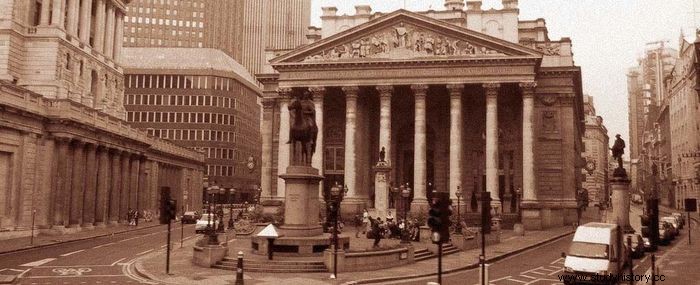
- Credit:Pinterest
The first stock markets in the world can be linked back to Belgium. Ghent, Bruges, Flanders and Rotterdam were the first cities in the Netherlands to host their own "stock market systems" in the 15th and 16th centuries.
Although it is generally accepted that Antwerp had the world's first stock exchange system. This is because the city was the commercial center of Belgium and the home of the influential Van der Beurze family. This resulted in early stock markets known as Beurzen.
However, all these early stock markets lacked one thing, i.e. stocks. The infrastructure and institutions were similar to today's stock markets. The markets used to deal with government affairs, personal debt and various other businesses. Although the actual properties traded were different, the system and organization were similar.
The world's first listed company
East India Company is known as the world's first listed company. The risk was the only simple reason why East India Company became the first listed company.
To put it simply, sailing to the far corners of the planet was a risky business. Too risky, especially for a single company. When East India was first discovered, it was considered a haven for wealth and trade opportunities. Therefore, explorers sailed there in droves. Unfortunately, only a few of these trips came home. This resulted in ship losses, wasted wealth, and financiers realized they had to do something to reduce the risk.
This resulted in a unique company, formed in 1600, known as the "Governor and Company of Merchants of London trading with the East Indies". It later became known as the East India Company and became the first to use a limited liability formula.
Trading Companies
Investors understood that putting all the "eggs in one basket" was not a smart way to approach investing in trade in East India. Therefore, the formula proved to be very successful. Similar charters were given to other companies throughout France, England, Belgium and the Netherlands within a decade.
In 1602, the Dutch East India Company officially became the world's first listed company. That was after it issued shares in the company on the Amsterdam Stock Exchange. Shares and bonds were issued to investors, and in return each investor was entitled to a fixed percentage of the company's profits.
Selling shares in coffee shops
Before shouting across the trading floor, investors began running businesses in coffee shops and throwing order forms in the air. Previously, the shares were handwritten on sheets of paper, and investors exchanged these shares with other investors in coffee shops.
Coffee shops were the first basic stock markets because investors wanted to visit these markets to sell and buy stocks. And it was not long after, and some realized that the whole business could become more efficient if someone created a dedicated marketplace. The idea was thus invented for a place where business people could trade stocks without ordering a coffee or shouting over a crowded cafe.
The first stock market bubble
-
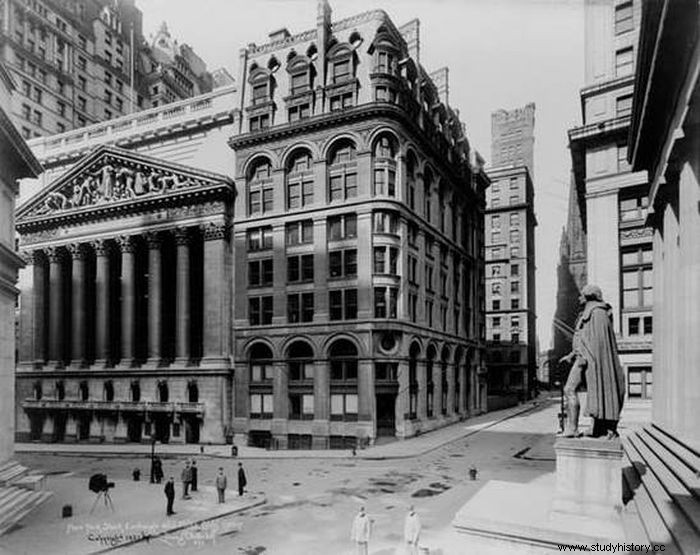
- Credit:Business Insider
The importance of the stock market was misunderstood in the first days. Although people realized that it was valuable and powerful, no one understood the potential and it can be.
Therefore, the early days of the stock market were like the Wild West. Eventually, companies would open up overnight in London and issue shares and shares in new companies. Companies managed to make thousands of pounds in many cases, even before a single ship had ever left port.
There was no regulation in earlier times, and only a few ways were widespread to distinguish legitimate companies from illegitimate ones. This resulted in the bubble bursting rapidly. The government of England banned the issuance of shares, and many companies stopped paying dividends to investors until 1825.
The first stock exchange
The London Stock Exchange was officially established in 1801 despite the ban on issuing shares. However, no company was allowed to issue shares until 1825. Therefore, there was a minimal exchange. Furthermore, it also prevented the London Stock Exchange from preventing a true global superpower.
That is why the creation of the New York Stock Exchange (NYSE) in 1817 is considered such a critical moment in history.
The NYSE has been trading stocks since the beginning of time. In addition, a lesser known fact, but the NYSE was not the first stock exchange in the United States. The Philadelphia Stock Exchange has the title. Despite this, the NYSE became the most powerful stock exchange in the country. This is due to the positioning in the center of American trade and economy in New York and domestic competition.
The New York Stock Exchange became the leading exchange for America and the world. At the same time, the London Stock Exchange was the most important stock market for Europe.
-
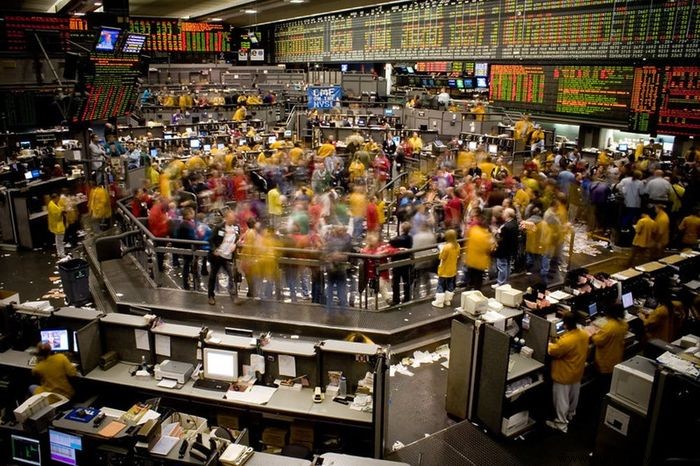
- Credit:The Conversation
Modern stock markets
At present, virtually every country in the world has its own stock market. The large markets in developing countries usually appeared in the 19th and 20th centuries. However, after the creation of the London Stock Exchange, the New York Stock Exchange was first created. All the world's major economic powers have introduced highly developed stock markets, from Switzerland to Japan, which are still active today.
Canada developed its first stock exchange in 1861. This stock exchange is the largest in Canada, and it is the third largest in North America by market value. The stock market includes companies based in Canada as well as the rest of the world. TSX is responsible for hosting more oil and gas companies than any other stock exchange globally. This alone makes Canada's stock market one of the main reasons for such a high market value.
War-torn countries such as Iraq also have their own stock markets. However, the Iraq Stock Exchange does not have many listed companies, but it is still available to foreign investors. The Iraqi stock exchange is one of the few stock markets that the economic crisis of 2008 could not affect.
Modern stock exchanges
Stock markets are found in all corners of the world. There is no denying that the global importance of the stock markets is massive. Every day, trillions of dollars are traded on stock markets around the world, and they are the apparatus of the capitalist world.
After dominating the world economy for almost three centuries, the first legitimate challenger came to the New York Stock Exchange in the 1970s. In 1971, two organizations, the National Association of Securities Dealers and the Financial Industry Regulatory Authority, created the NASDAQ stock exchange - a threat to the New York Stock Exchange.
Since time immemorial, the NASDAQ has functioned differently from the traditional stock exchanges. Instead of having a physical location, NASDAQ is entirely on a network of computers, and all trades are performed electronically.
Thanks to electronic trading, NASDAQ gained a few significant advantages over its competitors. It also reduced the bid-ask spread. The tension and competition between NASDAQ and the NYSE has stimulated both exchanges to expand and innovate over the years. For example, in 2007 the NYSE merged with Euronext to create the NYSE Euronext, the first transatlantic exchange ever in the world.
-
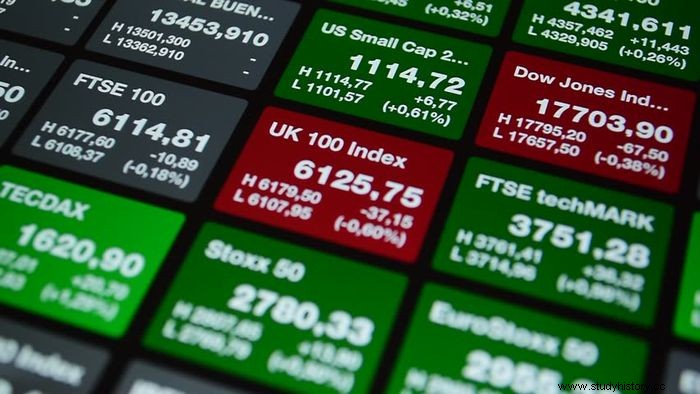
- Credit:Forex Forex
Dow Jones Industrial Average
A significant part of modern stock markets are stock market indices. The Dow Jones Industrial Average is the most important index in the world. The index was one of several indexes first created by Charles Dow, editor of the Wall Street Journal. Dow also co-founded Dow Jones &Company.
The Dow Averages were first published in 1885. Similarly, the Dow Jones Industrial Average has 30 large publicly owned U.S. companies. Companies play an important role in the US economy. Traders started the index as a list of heavy industry companies; hence the name "Industrial" Average.
Other major indexes
At present, most companies on the index have little to do with heavy industry. To reflect their impact on the US economy, companies are going up and down from the index over time. Some of the notable companies that are currently on DJIA are:
- American Express
- 3M
- Goldman Sachs
- General Electric
- DuPont
- Coca-Cola
- IBM
DJIA consists of some of the richest and most influential companies in the United States. The longest company on the index is General Electric, last added in 1907. Furthermore, it is the only company on DJIA that was also on the original DJIA.
Some of the companies recently removed from the list are Bank of America and Hewlett-Packard. Both companies lost their index status in September 2013.
Other major stock market indices are the S&P 500, Nasdaq Composite and Russell 2000.
Primary stock market crashes throughout history
-
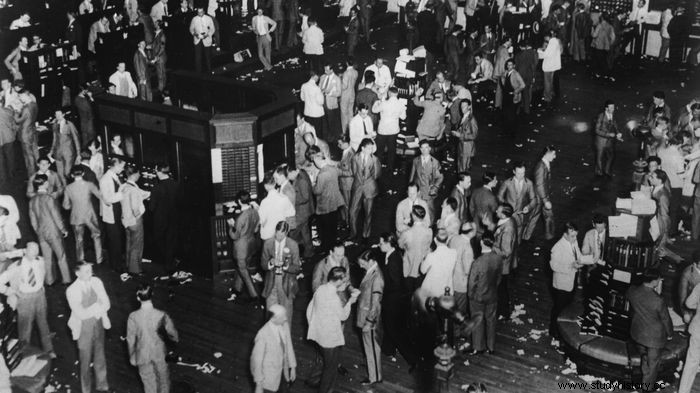
- Credit:History
Stock market crash is an inevitable side effect of any market where public attitudes play a dominant role.
Almost all the major markets have experienced crashes at some point. These crashes are by nature led by speculative economic bubbles. A stock market crash usually occurs when speculation extends far beyond the actual value of a stock.
There have been many crashes throughout history. This includes Black Thursday or Horrible Thursday in 1929, followed by Black Monday and Black Tuesday. The Dow Jones Industrial Average lost 50% of its value during this crash. This crash sent America and much of the world into a deep economic depression that wiped out billions of dollars.
Other major stock market crashes are:
- Stock market crash 1973-1974:
- Black Monday 1987
- Dot-com Bubble from 2000
- Stock Market Crash in 2008
These crashes pale in comparison to 1929, but they have nevertheless involved double-digit percentage losses worldwide. Furthermore, progress in electronic trading led many to question the basics of the stock market. It includes the theory of market equilibrium, rational human behavior and effective market hypothesis.
Major stock market crash
The first major crash in the electronic trading era was the stock market crash in 1987. The crash in 1987 began in Hong Kong when stock markets fell between 45.5% on 19 and 31 October. Large stock markets around the world had all experienced double-digit collapses by the end of October. Similarly, the stock markets in Australia experienced a decline of 42%. At the same time, stock markets in the United States and Canada suffered losses of approximately 23%.
Stock Market Circle Drinkers
-
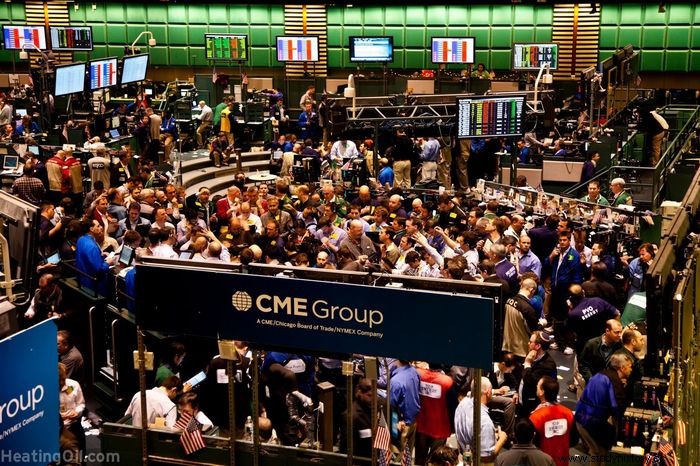
- Credit:Medium
The world's largest stock exchange, the NYSE, created a single-breaker in 2012. If the Dow falls by a certain number of points within a certain period, the machine automatically stops trading. This system aims to reduce the likelihood of a stock market crash, and at the same time, when a crash occurs, it will limit the damage of a crash.
In addition, the Chicago Mercantile Exchange and the IIROC or Investment Industry Regulatory Organization of Canada also use circuit breakers. The NYSE and the Chicago Mercantile Exchange use the following table to examine how long trading will cease:
- 10% fall:Trading will close for one hour if the fall occurs before kl. The trade will close for half an hour if a fall occurs between 2 and 2. The market remains open if the decline occurs after 30:2.
- 20% fall:The market stops for two hours if the fall occurs before kl. 1. The market closes for one hour if the fall occurs between kl. 1 and 2. The market closes for the day if the fall occurs after kl. 2.
- 30% fall:The market closes for the day (regardless of the time) if a 30% fall occurs.
When do stock markets around the world close?
The significant advantage of having stock markets all over the world is that there is always a market open in some parts of the world. Most of the world's stock markets open between 9:00 and 10:00 local time, and they usually close between 4:00 and 5:00 local time. NYSE, TSX, NASDAQ and Shanghai Stock Exchange open at 9:30.
In addition, some stock markets take a break for lunch. Four major Asian markets take a lunch break lasting 1 hour to 1.5 hours in the middle of the day. These markets include the Hong Kong Stock Exchange, the Tokyo Stock Exchange, the Shenzhen Stock Exchange and the Shanghai Stock Exchange.
Different countries celebrate different days of the year. Therefore, some global stock markets are open on holidays in the United States.
The world's largest stock markets today
-
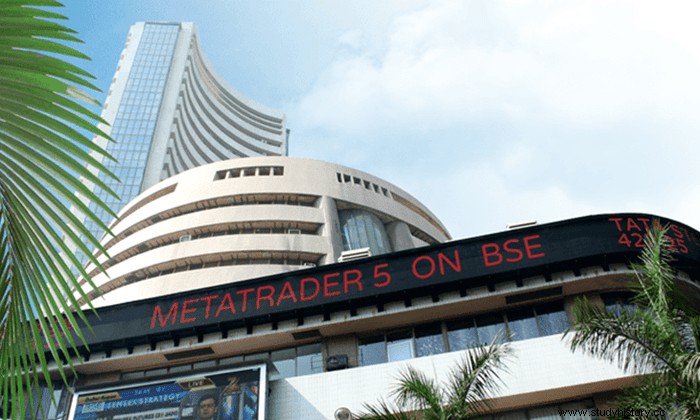
- Credit:Blog
The list of the 10 largest stock markets in the world today specifies the changing roles of different countries throughout the history of the world. The top 10 stock markets today include markets in highly developed countries and markets in developing parts of Asia. This is a huge improvement.
The following are the 10 best trading venues in the world today ranked by market value:
- New York Stock Exchange
- NASDAQ
- Tokyo Stock Exchange
- London Stock Exchange Group
- Euronext
- Hong Kong Stock Exchange
- Shanghai Stock Exchange
- Toronto Stock Exchange
- Frankfurt Stock Exchange
- Australian Securities Exchange
Other emerging stock markets outside the top 10 include:
- The Bombay Stock Exchange is based in Mumbai, India. The BM&F Bovespa Stock Exchange is based in Sao Paulo, Brazil.
Conclusion:The future of the stock market
The stock markets are here to stay. They are not going away anytime soon. They will continue to remain a driving economic force in virtually every country in the world. Analysts have not predicted what the future of the stock market will bring, but they have thought of some important things to consider.
- First, the NYSE will continue to be the largest and most powerful stock exchange in the world. It is so large that market value is more significant than NASDAQ, Tokyo and London combined.
- Secondly, it is likely that the stock markets will continue to grow and merge in the coming years. Some analysts and experts in the field have suggested that we will eventually see a single global stock market, even though it seems unlikely.
In conclusion, no matter what the future holds for stock markets, they will continue to play a significant role in the global economies around the world in the long run.
It is also interesting to see the new wave of currency exchange and valuations when it comes to blockchain technology. The world now sees Bitcoin and NFTs coming into the picture as a new form of transaction that can also be traded publicly, just like stocks.
